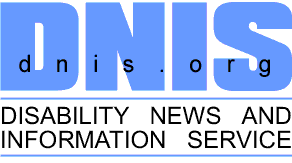India, the largest democracy in the world, is home to the highest population of people with disability all over the world. There are 26.8 million persons with disabilities in India, making up 2.21 per cent of the total population. Yet, they do not find appropriate representation in the media. They are either misrepresented or under-represented which results in social discrimination.
It is critical to understand that an individual’s potential is not defined by their disability. Images and statements in the media can deeply influence public opinion and contribute to establishing societal norms. Issues and challenges faced by disabled individuals are barely covered in the media. The only time they are on screen is during disability day, and they get less media attention for the rest of the year. Even though the media attempts to address the issue of disabled people, there is a lack of interest and initiatives on the part of the media toward disability in India.
Attitudes, beliefs, stereotypes, and misconceptions of society act as significant barriers for people with disabilities. People have uncertain attitudes & opinions towards them. They are socially isolated & most of the time become an object of pity while they are in a group. Disabled people have always been fighting for their inclusion in society. When dealing with someone with a disability, people tend to avoid the situation. These instances portray the negative attitude of people towards them which further affect the integration of disabled persons into the community. Negative perceptions can lead to a lack of work opportunities, low self-esteem, and isolation which can consequently lead to stigmatization, marginalization, and further exclusion of persons with disabilities from society. The media is the custodian of human rights. The inaccurate representation of people with disabilities often promotes ‘othering’ as the media discerns the information regarding them as prejudiced, stereotyped & sensationalist.
The Cinematograph Rules, 1983 mentions that there should be an appraisal of public reactions to films as it has already been acknowledged that movies tend to have an impact on the public mind. Based on this provision, the public has a right to raise their voice if they believe that a certain film has adversely portrayed any disability, the Censor Board also has the power to review such movies. Besides this provision, the Censor Board is also licensed under its objectives of film certification and can remove scenes that show or ridicule physically and mentally handicapped persons. Movies can play a significant role to remove prejudgments and stigma against the disabled, deconstructing superstitious and illiterate attitudes that display disability as a curse or madness, and yet correct prevalent perceptions and stereotypes, by portraying the disabled with understanding, empathy, dignity, and conviction.
When we talk of ‘Inclusion’, that means the inclusion of all in all forms. Media houses should also invite persons with disabilities for panel discussions over other topics related to sports, employment, finance, entertainment, and other fields. Providing them with different platforms not only allows them to express their opinion but also generates a sense of inclusion. Their presence should not only be confined to talking about disability. This does not give them the liberty to express their opinion on other matters and it reinforces the traditional view of restricting their personality only to their disability.
Considerate measures for disability inclusion and discourses around disability should not only be made around days of national/ international relevance but also be included in everyday narratives, news and stories. Realizing that people with disabilities do not form a homogenous group and have varied needs that need to be highlighted becomes a core responsibility of the media – the fourth pillar of democracy. It is only through accurate and informed media portrayal that persons with disabilities be given an equal opportunity to participate in society and reach their complete potential.
